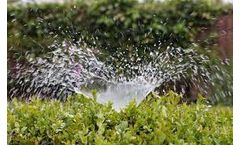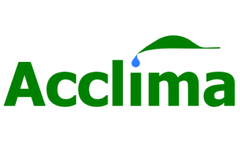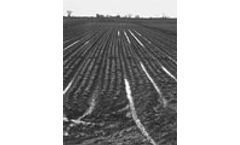Crop Evapotranspiration Articles & Analysis
18 articles found
Abstract California has become the leading dairy products producing state in the USA. This has resulted in farms commonly milking several thousand cows per day. The care and feeding of the animals has produced large waste streams commonly collected and stored in lagoons. Environmentally safe handling and reuse of the lagooned wastewater is the objective of this study. A system of Subsurface Drip ...
Once a timeline is established for kernel development we can focus on monitoring plant available water until the onset of hull split; a process that requires both the estimation of crop water requirements as well as in-field measurements. Planning water management until the onset of hull split The most common practice of scheduling irrigation in California is to reference ...
Management and scheduling of irrigation water requires consideration of evapotranspiration, one of the most important hydrological variables. This study investigates the variations in the daily potential evapotranspiration (ET0), and its aerodynamic (ETa) and radiometric (ETr) components in three areas (western, central and eastern) of the Inner Mongolia Autonomous Region (IMAR) during the ...
Accurately estimating crop evapotranspiration (ET) is essential for agricultural water management in arid and semiarid croplands. ...
Actual daily evapotranspiration (ETa) was measured in two weighing micro-lysimeters, from 1 July 2009 to 30 June 2011 on an alpine meadow in the Qilian Mountains, northwest China. ...
The crop evapotranspiration values have been determined using the universally accepted Penman–Monteith method. The reference evapotranspiration varied by 93 mm, which accounts for variation of 20.12% for a temperature change of 1.61 °C. Net irrigation requirement of the crop is influenced greatly due to the ...
Gas exchange techniques, sap flow measurements, and the crop evapotranspiration minus micro-lysimeter method were used to evaluate plant transpiration. ...
Knowledge/mapping of actual evapotranspiration for the mainland uses (natural pasture, irrigated crops and tree plantations) is of major importance for water management in this remote area. The Surface Energy Balance System (SEBS) model was used to estimate actual evapotranspiration (ET) using non-cloudy images for 32 dates of Landsat 5 TM from ...
The study of crop water requirements (CWR) under climate change is critical for reasonable crop irrigation. ...
Phenological survey allowed determination of the crop growth stages: initial, development, mid- and late-season. The average lengths of these crop stages were 32, 43, 49 and 136 days for early variety and 33, 49, 63, and 105 days for mid-season variety, respectively. Mean value of crop evapotranspiration (ETc) for the four growth ...
Crop evapotranspiration is the most important parameter for management of irrigation systems in greenhouses. ...
Real-time prediction of daily reference crop evapotranspiration (ET0) is the basis for estimating crop evapotranspiration and for computing crop irrigation requirements. ...
Two common methods include tracking crop evapotranspiration (ETc) and tracking the water content with a sensor buried in the soil. In Colorado, a popular online tool that estimates the ETc for a variety of well-irrigated crops is the Colorado Agricultural Meteorological Network (CoAgMet). However, the use of CoAgMet to estimate the ETc of a ...
Irrigation treatments were a ratio of crop evapotranspiration (ET) as: 1.0 ET, 0.84 ET, and 0.64 ET. Fertilizer treatments were applied at the recommended rate of N either as a commercial fertilizer or with organic manure. ...
Local crop evapotranspiration (ET) measurements are needed for northeastern Louisiana. ...
The water requirements of crops are dependent on evapotranspiration (ET), soil chemistry, and the crop’s maximum allowable depletion (MAD). ...
However, daytime sprinkler irrigation modifies the microclimatic conditions within the crop canopy which could result in improved crop growth. We studied the effect of daytime and nighttime irrigation on the growth and yield of maize (Zea mays L.) irrigated with a solid-set sprinkler system. ...
Three irrigation levels (20% below crop evapotranspiration [ETc], full ETc replacement, and 20% above ETc), four N application rates (0, 60, 120, and 180 kg N ha–1), and three fertilizer application methods (through-the-drip, sidedress, and knifed into the middle of the plant stool or ‘stool splitter’) were evaluated on sugarcane for four successive ...







